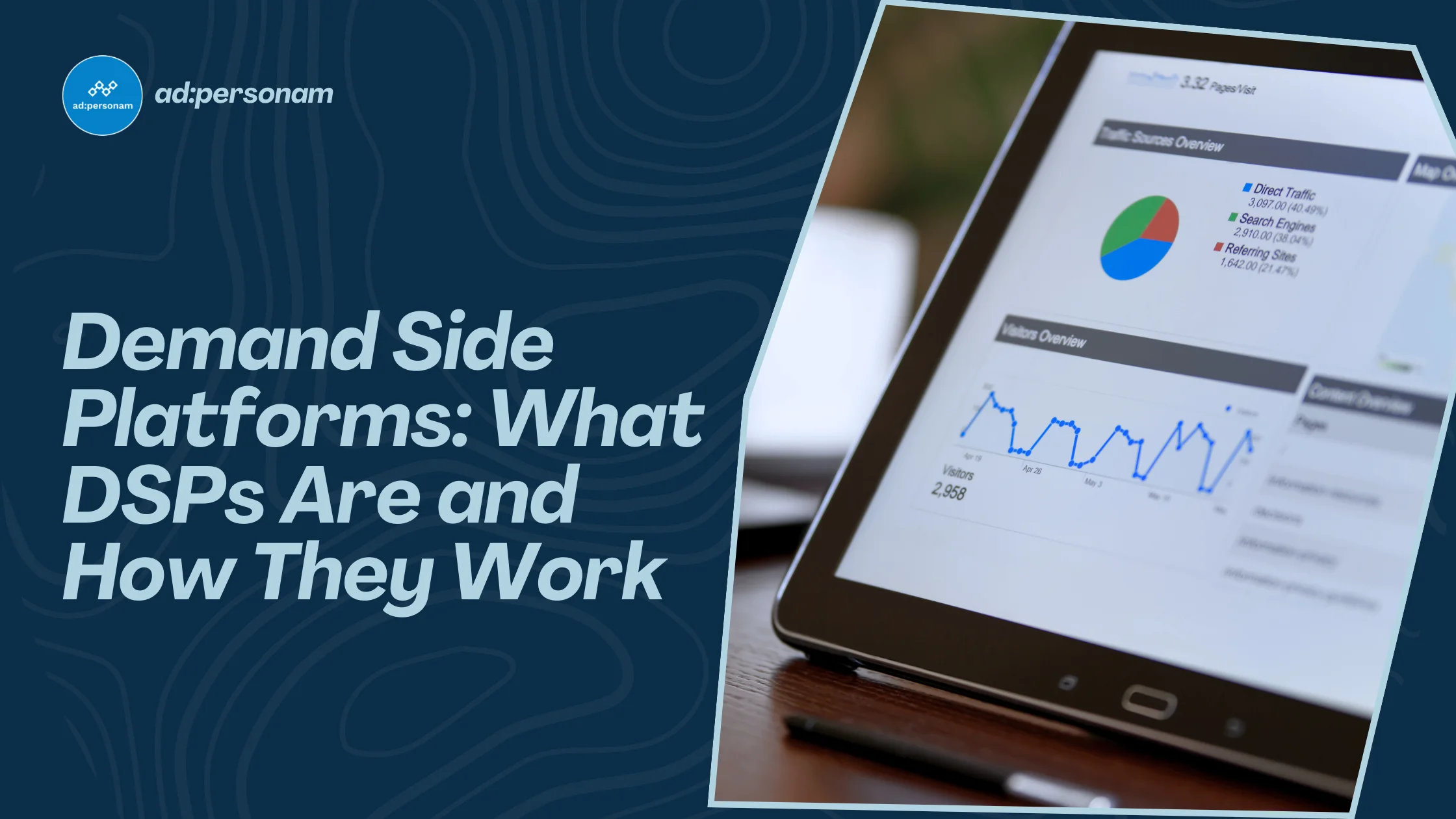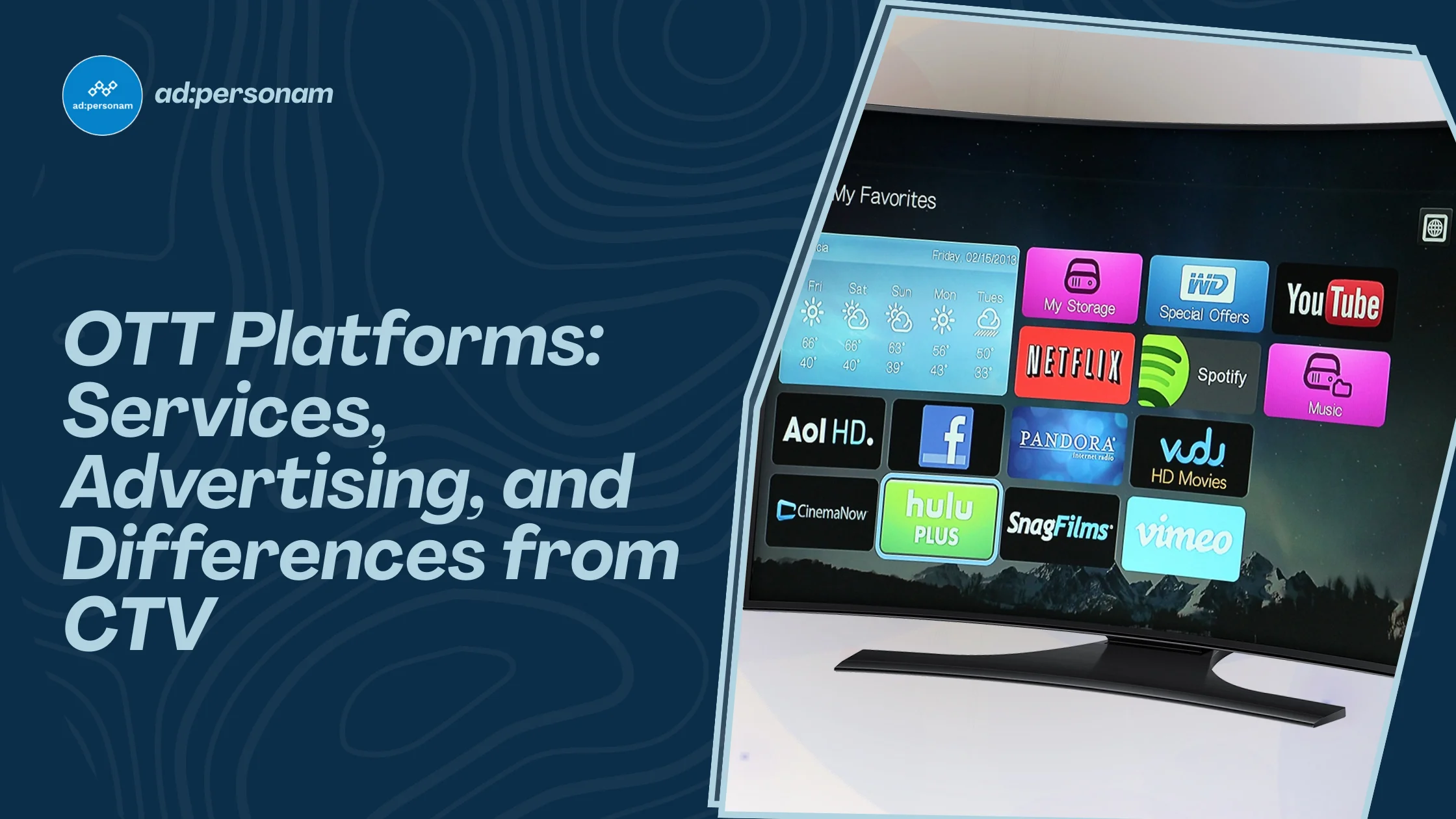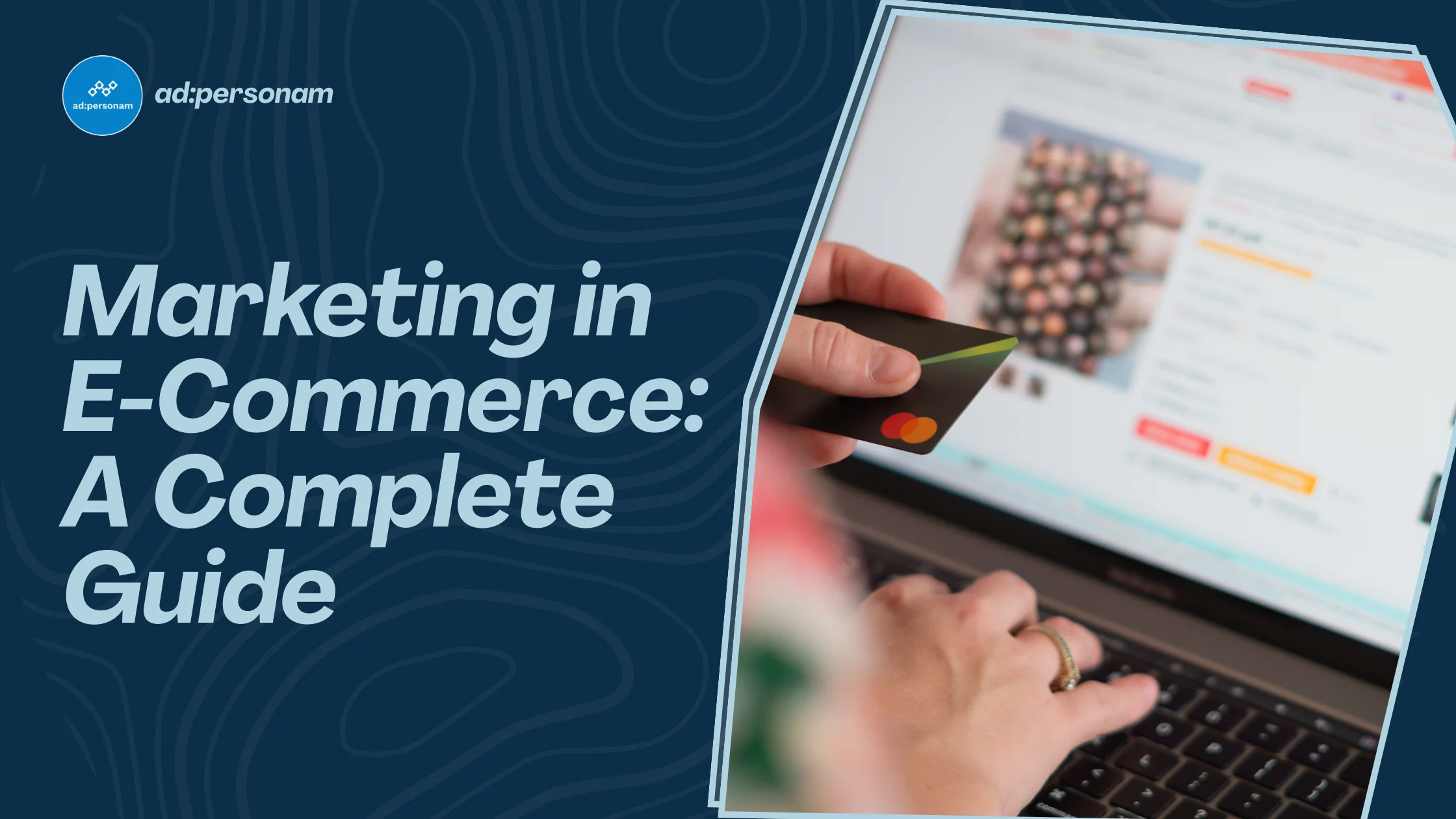Demand Side Platforms: What DSPs Are and How They Work
What are DSPs, how do they work and why use them in programmatic marketing? Discover how you can test ad:personam to create effective campaigns with complete autonomy, in self-service mode.
Contents
- What is a Demand Side Platform (DSP)?
- How does a DSP work?
- Why use a DSP?
- What's the difference between a DSP and an SSP (Supply Side Platform)?
- What are the components of a DSP?
- Types of DSPs
- How to choose the right DSP for your business
- How to start using a DSP
- ad:personam DSP: how it works and why you should choose it
- Frequently Asked Questions about Demand Side Platforms

Demand Side Platforms (DSPs), thanks to their ability to automate advertising purchases in real-time and offer high-precision targeting, are making their way as a solution to optimize business advertising campaigns. In this article you'll discover everything you need to know about DSPs: what they are, how they work, why to use them and which platform can really make a difference for your business.
What is a Demand Side Platform (DSP)?
A Demand Side Platform, also known by the acronym DSP, is a tool that allows brands, advertising agencies and advertisers to purchase advertising space in real-time across various digital channels, such as websites, mobile applications, online video and connected TV. It fits within programmatic advertising, a method that automates the buying and selling of advertising space using data and intelligent algorithms. For a practical example, imagine a fashion brand that wants to promote a new fall/winter collection. Thanks to a DSP, it can display its ads only to users who have shown interest in fashion online or who have made similar purchases, reducing advertising waste and increasing campaign effectiveness.
How does a DSP work?
The functioning of a DSP is based on connection with multiple advertising inventory sources, accessible through so-called Supply Side Platforms (SSPs). The DSP receives a request every time a user visits a web page or opens an app. This request is accompanied by a series of anonymized data about the user, such as location, device used, browsing behavior, and so on. Based on the collected information, the DSP decides whether or not to show a specific ad, and determines the bid to purchase that advertising space.
How does the programmatic lifecycle work?
The lifecycle of a programmatic ad is a complex but very rapid process. It starts with the "impression request": when a user loads a page, the website sends an ad request to SSPs. At this point the auction comes into play, where DSPs participate by offering a certain price to show the ad to the visitor. The bidding phase is based on real-time analysis of available data. The highest bid wins the auction (winning bid) and the advertising content is immediately delivered to the user. Right after exposure, the platform begins collecting data on user interactions, such as clicks, dwell time or conversions to improve subsequent campaigns.
Why use a DSP?
There are many advantages to using DSPs. Thanks to automation, it's possible to manage large quantities of campaigns without having to manually intervene on every single ad. This allows you to save time and resources, while maintaining precise control over every aspect of advertising. The real strength of a DSP lies in its advanced targeting capability. Algorithms analyze user behavior in real-time, allowing advertisers to reach exactly the desired audience. The ability to continuously monitor campaign performance enables constant cost optimization. According to data collected by eMarketer, a digital marketing research agency, over 90% of display advertising in the United States is purchased through DSPs, clear evidence of their efficiency and growing market confidence.
What's the difference between a DSP and an SSP (Supply Side Platform)?
DSPs are used by advertisers to purchase advertising space, SSPs are adopted by publishers to sell these spaces. DSPs connect to SSPs to access a wide range of advertising inventory available in real-time, making the system efficient and highly dynamic.
What are the components of a DSP?
A DSP is composed of various technological modules. At the center is the user interface, the dashboard that allows advertisers to create and manage advertising campaigns. Through a bidding module, the platform calculates in real-time how much to bid for each impression based on the audience. The user database contains all information collected about browsing habits and behaviors. This data is processed by the targeting engine, which identifies the most suitable audience for each campaign. The analysis and reporting module finally collects key metrics, offering deep insights into performance. Optimization algorithms complete the circle, automatically intervening to constantly improve results.
Types of DSPs
Currently, on the market, two different types of DSPs are available. Both models can manage user advertising campaigns, but through different methods.
Self-service DSP
Self-service platforms allow advertisers to autonomously manage all campaign phases. This model is particularly suitable for those who have a dedicated internal team or who want to maintain direct control over adopted strategies.
Full-service DSP
In the full-service model, instead, the advertiser is supported by a technical team or agency that manages the campaign on their behalf. This option is ideal for companies that prefer to delegate the operational part.
How to choose the right DSP for your business
Choosing the most suitable DSP depends on several factors. The available budget is obviously a first element to consider, as well as the type of audience you want to reach. Some platforms have specific features, such as CRM and DMP integration. The level of technical support available and transparency in costs and data are also fundamental parameters. Vertical solutions, designed for specific industries, can be more effective than generalist ones.
How to start using a DSP
To start using a DSP, you first need to define campaign objectives and subsequently choose the most suitable model between self-service and full-service. After creating an account on the chosen platform, you move on to audience segmentation, using target data and characteristics. At this point you can launch the first campaign, selecting advertising formats and budget. Constant monitoring of results and continuous optimization are finally the keys to progressively improving performance.
ad:personam DSP: how it works and why you should choose it
Ad:personam is a self-service platform designed to offer simple, effective and accessible solutions even to small and medium enterprises. Learn more about our DSP platform features.
How does ad:personam work?
It's characterized by a user-friendly interface and compatibility with various advertising formats, including the most innovative ones like TV advertising. Proprietary algorithms analyze user behavior in real-time, optimizing budget allocation to maximize results.
ad:personam reporting features
The reporting system is among the most appreciated aspects of ad:personam. Users can access customizable dashboards, view real-time reports, analyze return on investment (ROI), monitor cost per click (CPC) and obtain detailed insights into audience behavior, such as devices used, time slots and geographical areas.
How to optimize your campaigns with ad:personam DSP
To get the most from the platform, and therefore from your advertising, it's advisable to precisely define the audience, set clear and measurable objectives, leverage lookalike audiences and activate advanced tracking tools like pixels. Periodic data analysis allows you to continuously refine strategy and improve performance.
Frequently Asked Questions about Demand Side Platforms
How much does a DSP cost?
The investment is variable, but accessible even to small businesses thanks to flexible models like the one offered by ad:personam, which doesn't require any minimum spending to start your online campaigns.
Can a small company use a DSP?
Yes, even smaller businesses can benefit from a DSP, especially if designed to be intuitive and easily manageable.
Do you need a DMP to use a DSP?
A DMP can certainly improve targeting and overall campaign effectiveness.
You've discovered how a DSP works, what the advantages are, the types and how to get started. Now take action by creating an ad:personam account. Test the potential of programmatic advertising and start optimizing your advertising investment right away! Sign Up Now!
You might also like

OTT Platforms: Complete Guide to Advertising, CTV, and Streaming Services
Comprehensive guide to OTT platforms: how streaming services work, differences with CTV, and why they matter in programmatic advertising.

E-commerce Marketing: Complete Guide to Strategies, Tools, and Programmatic Campaigns
Discover how ecommerce marketing optimizes traffic, conversions, and sales through digital strategies and programmatic advertising.

Out of Home Advertising: Complete Guide to Programmatic OOH & DOOH
Learn how OOH and DOOH advertising work, key strategies for brand visibility, and how to run programmatic outdoor campaigns.